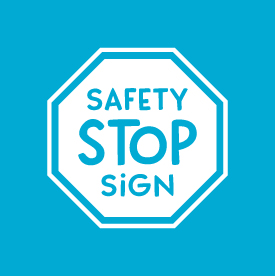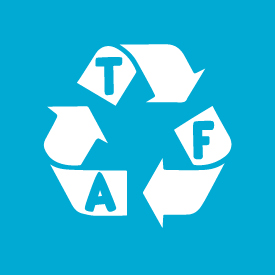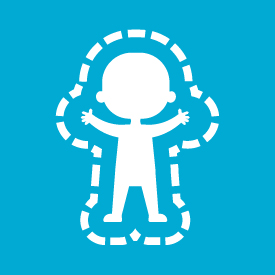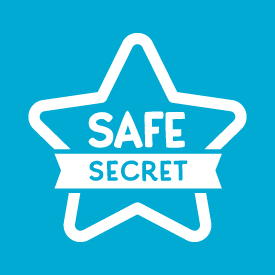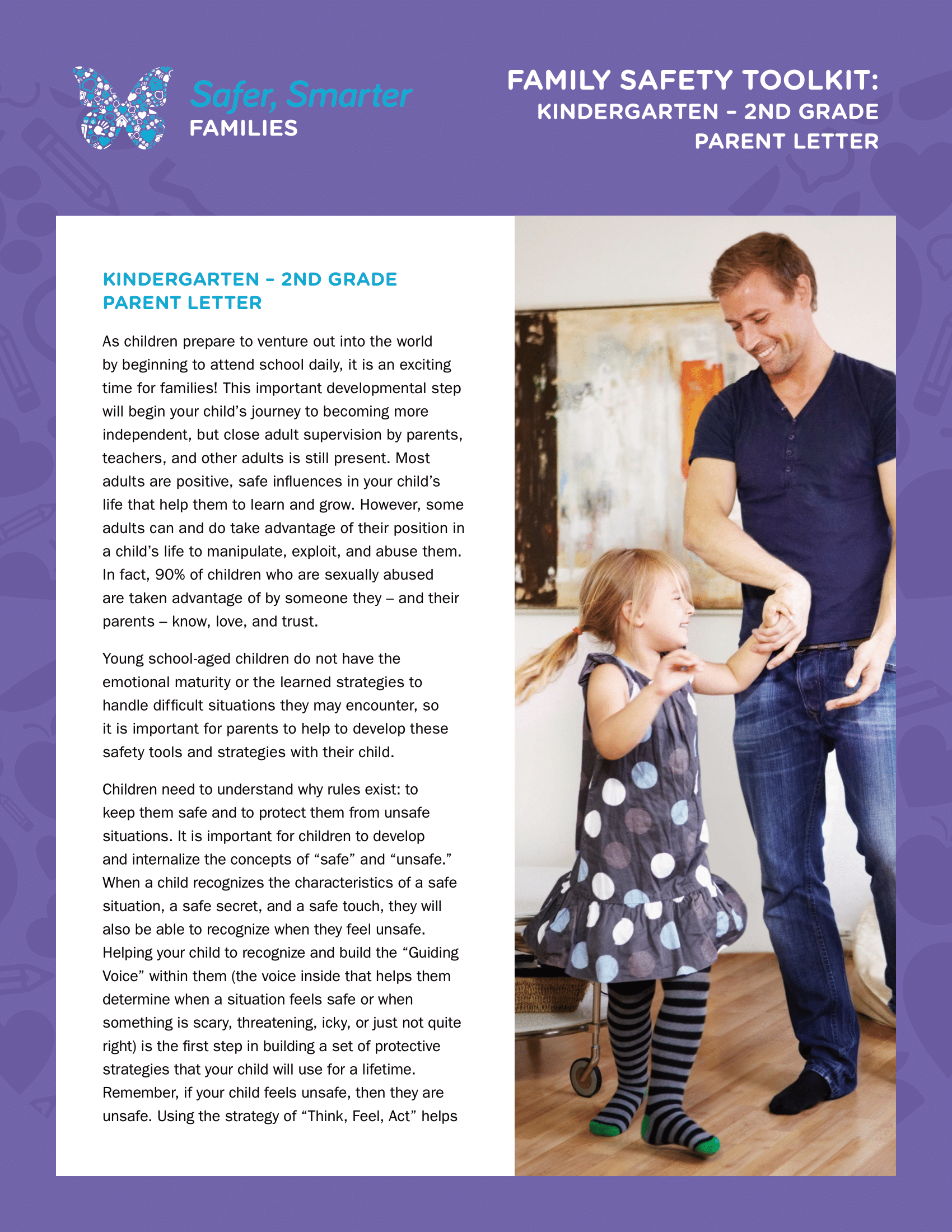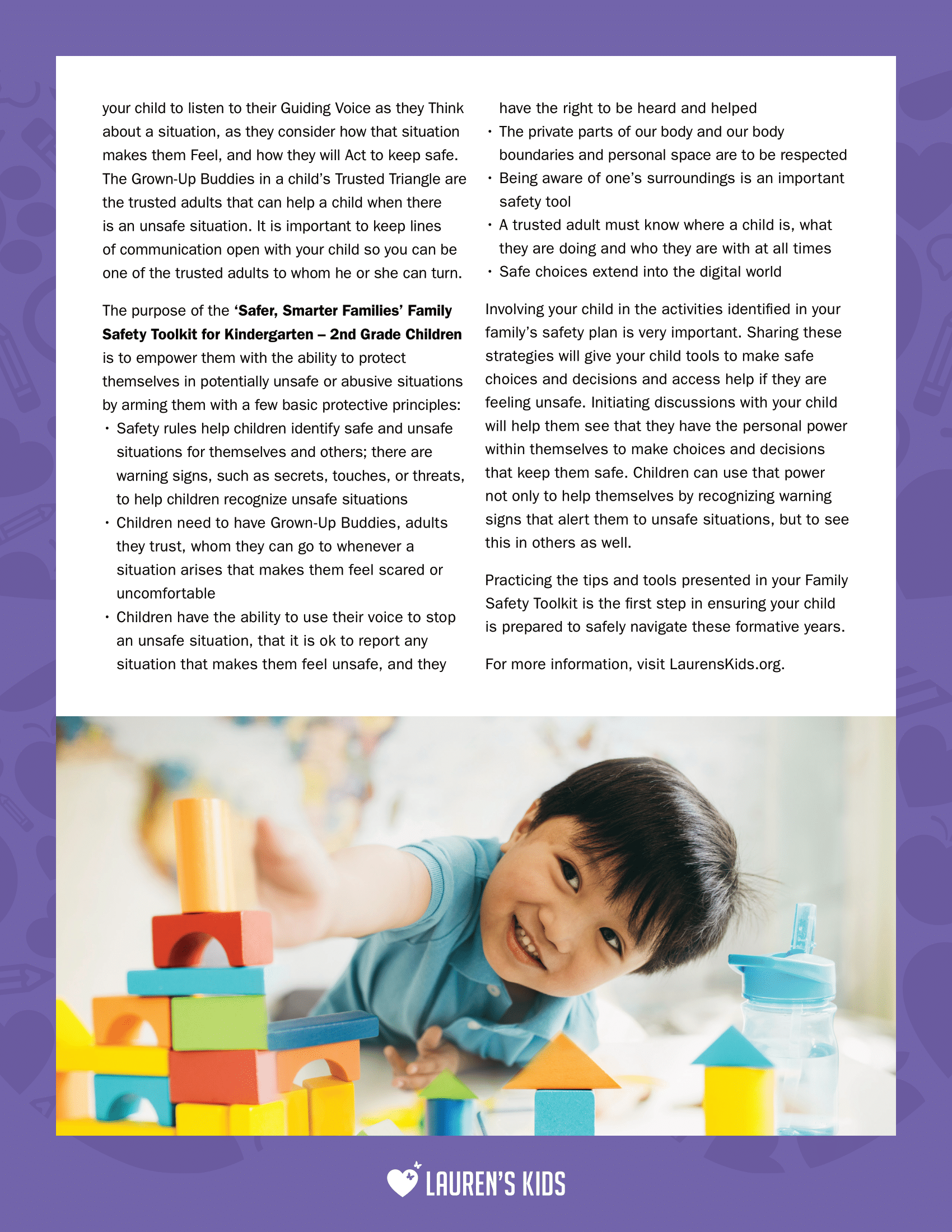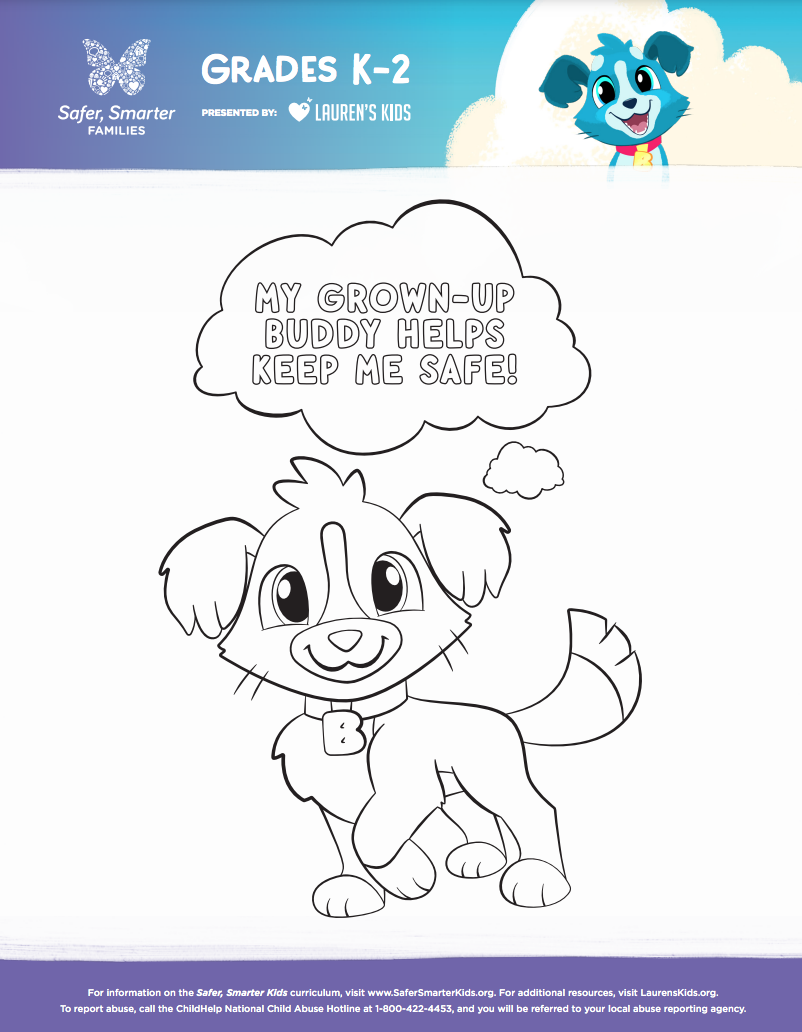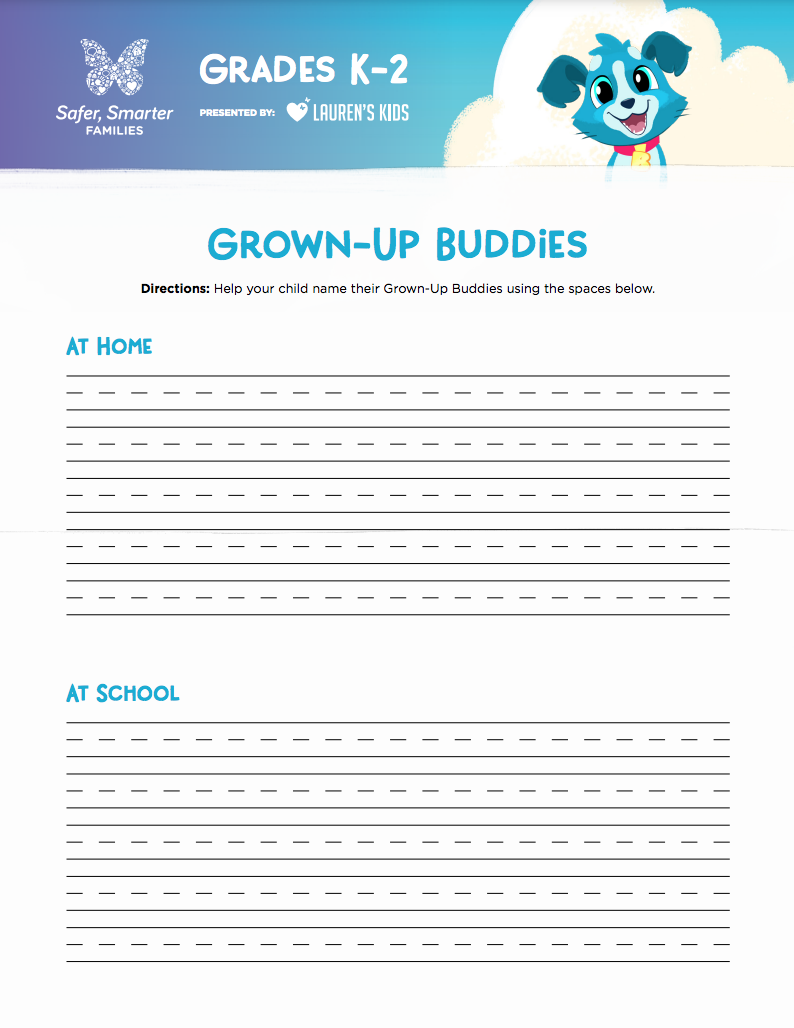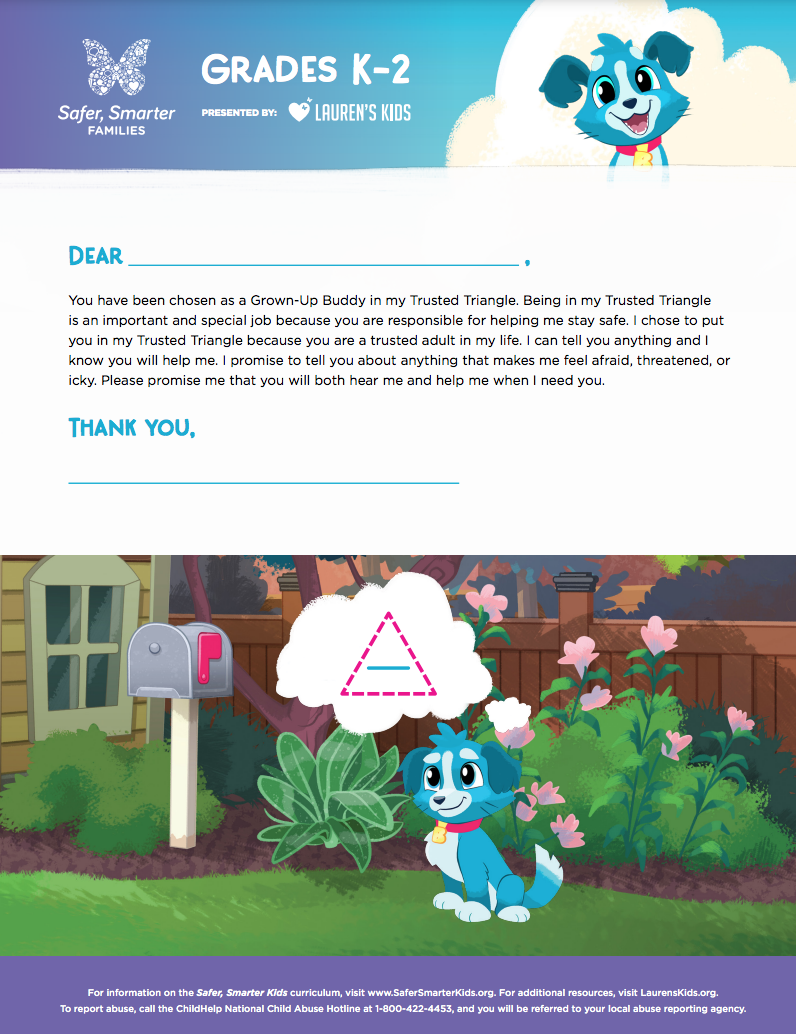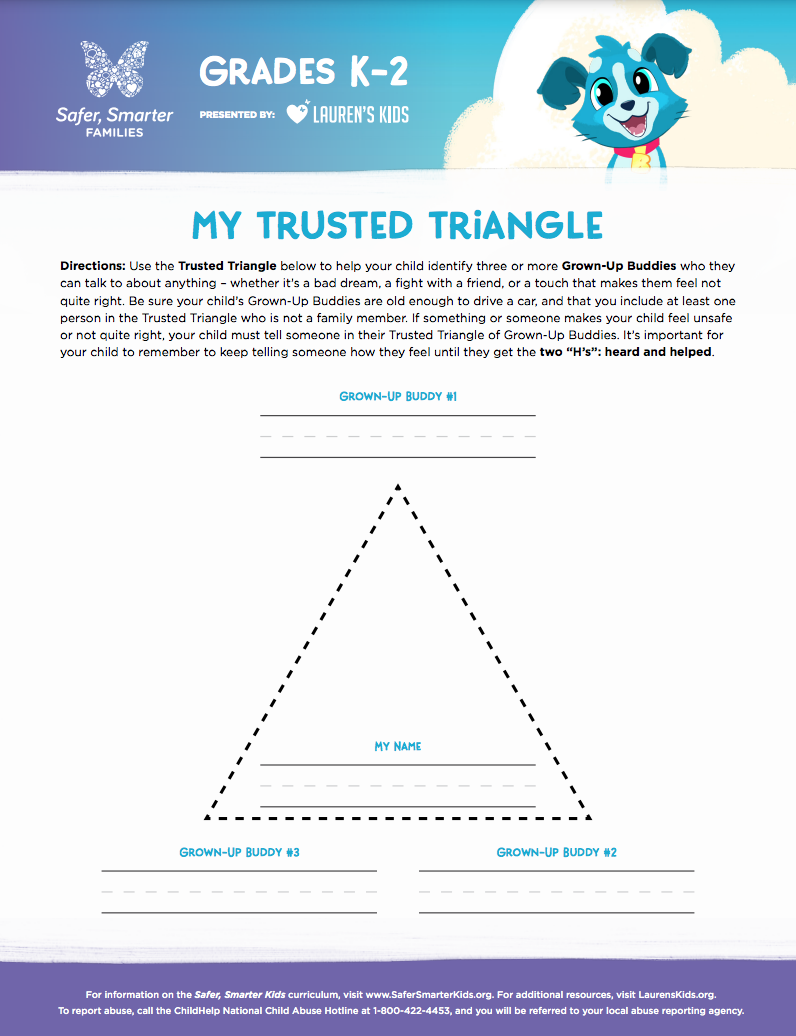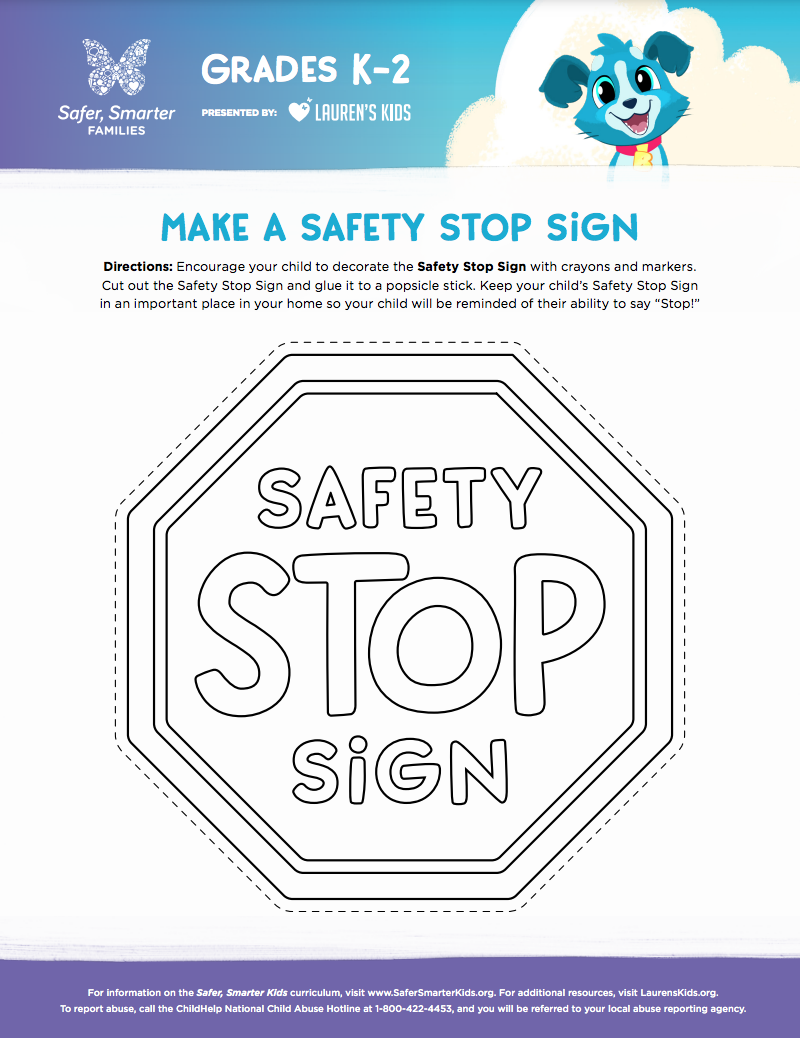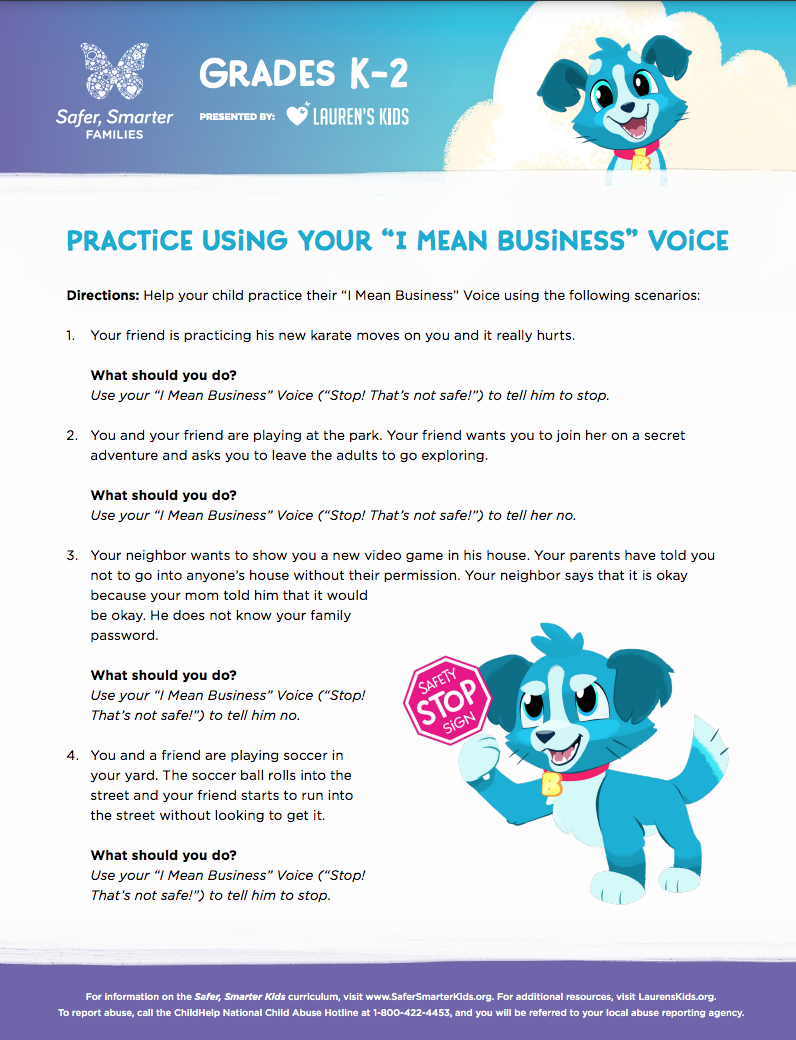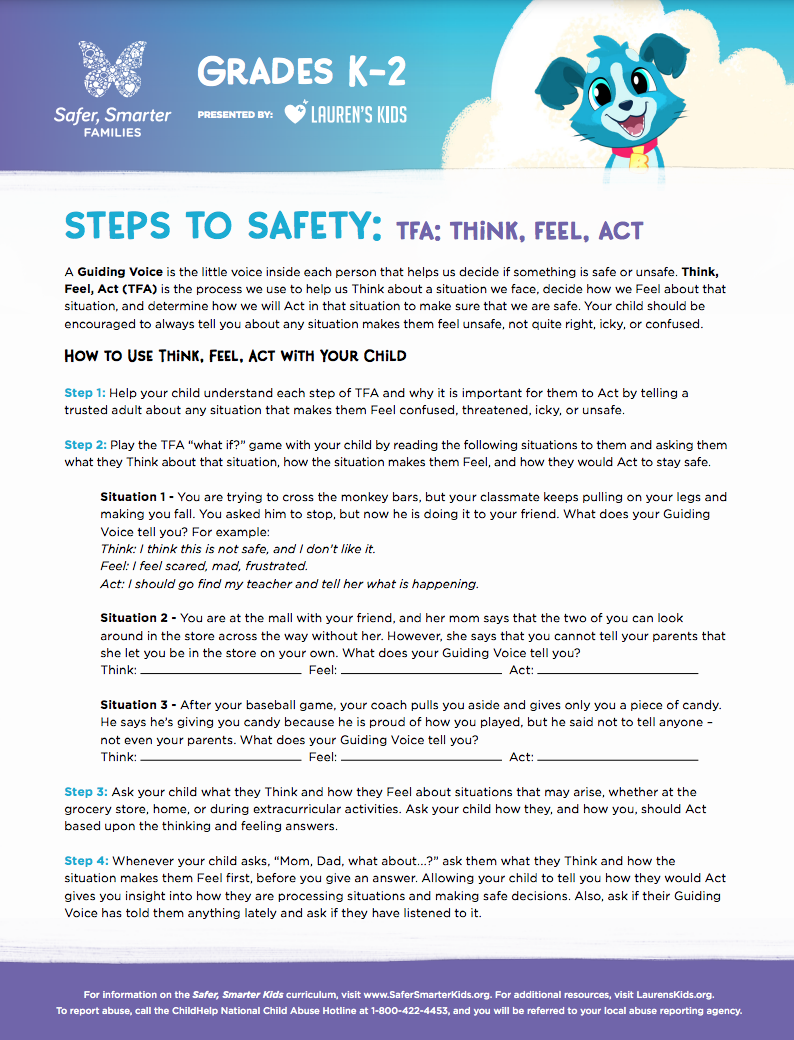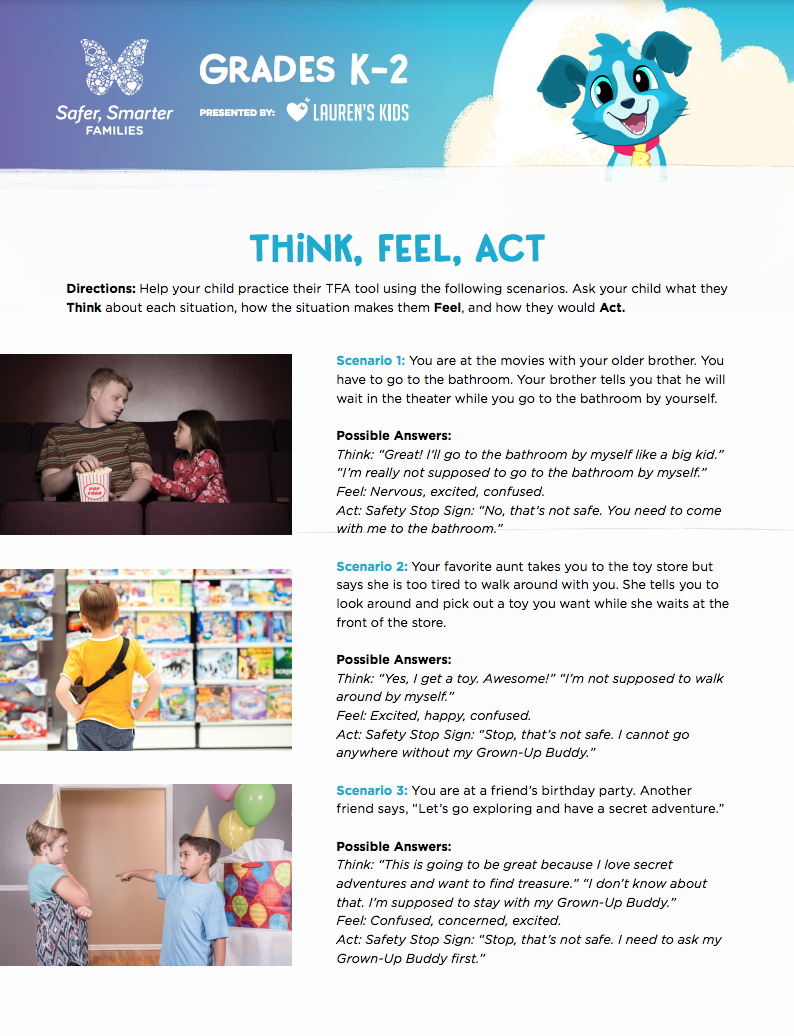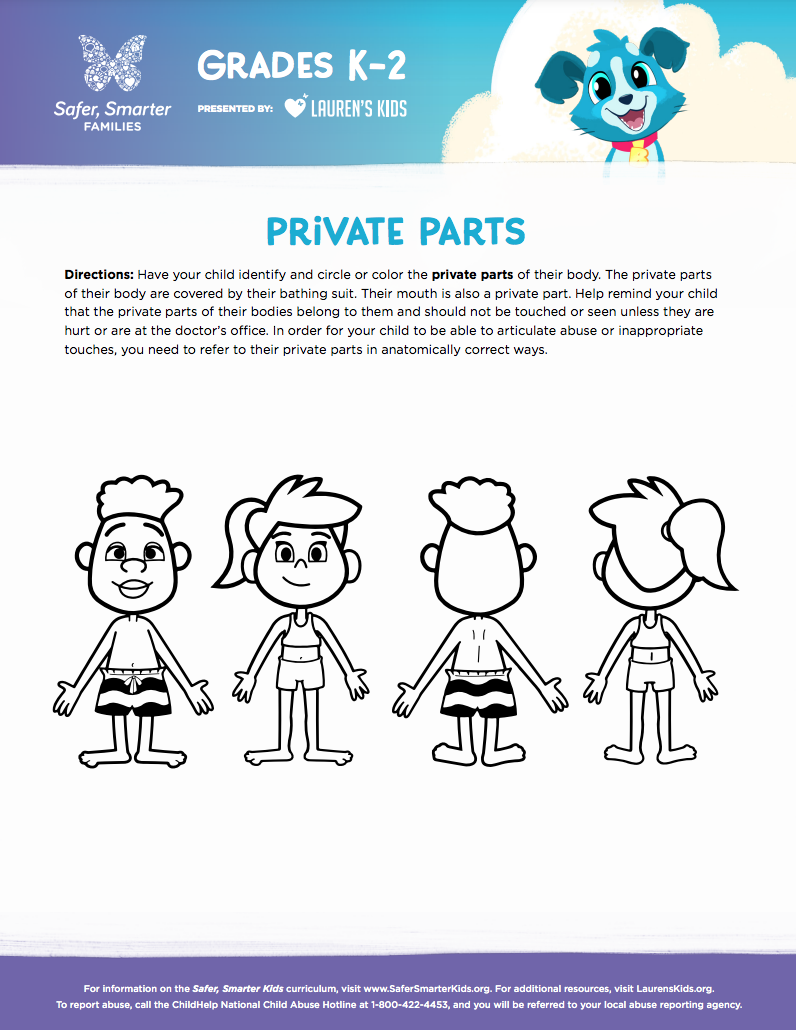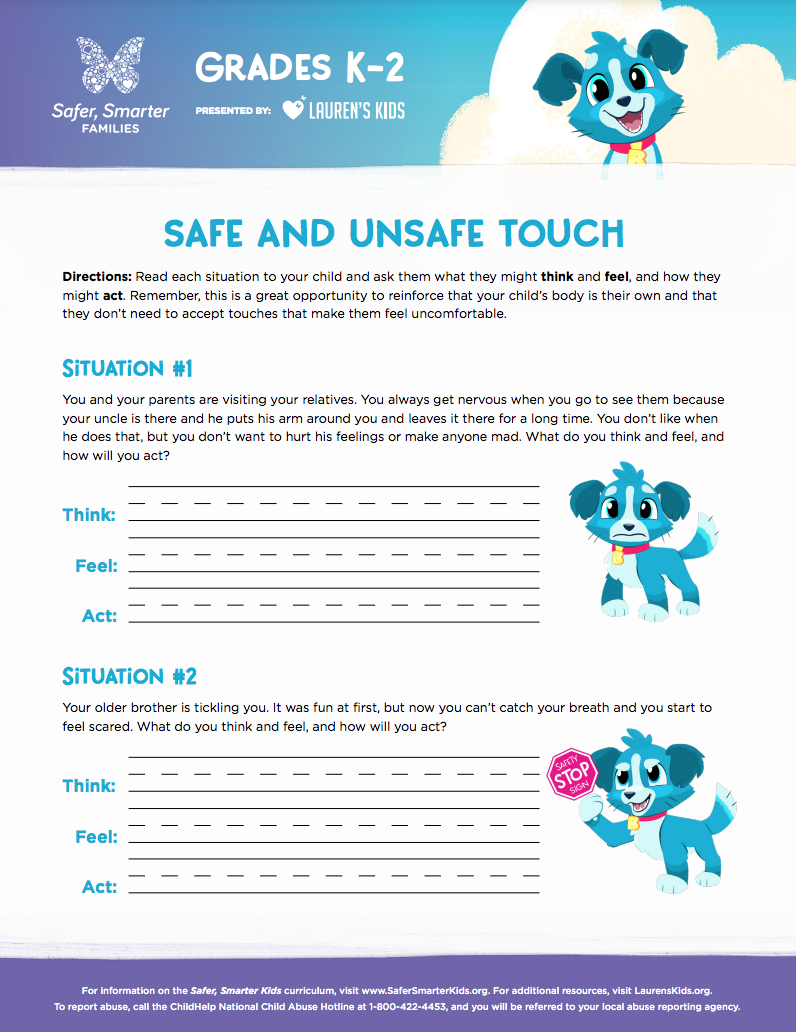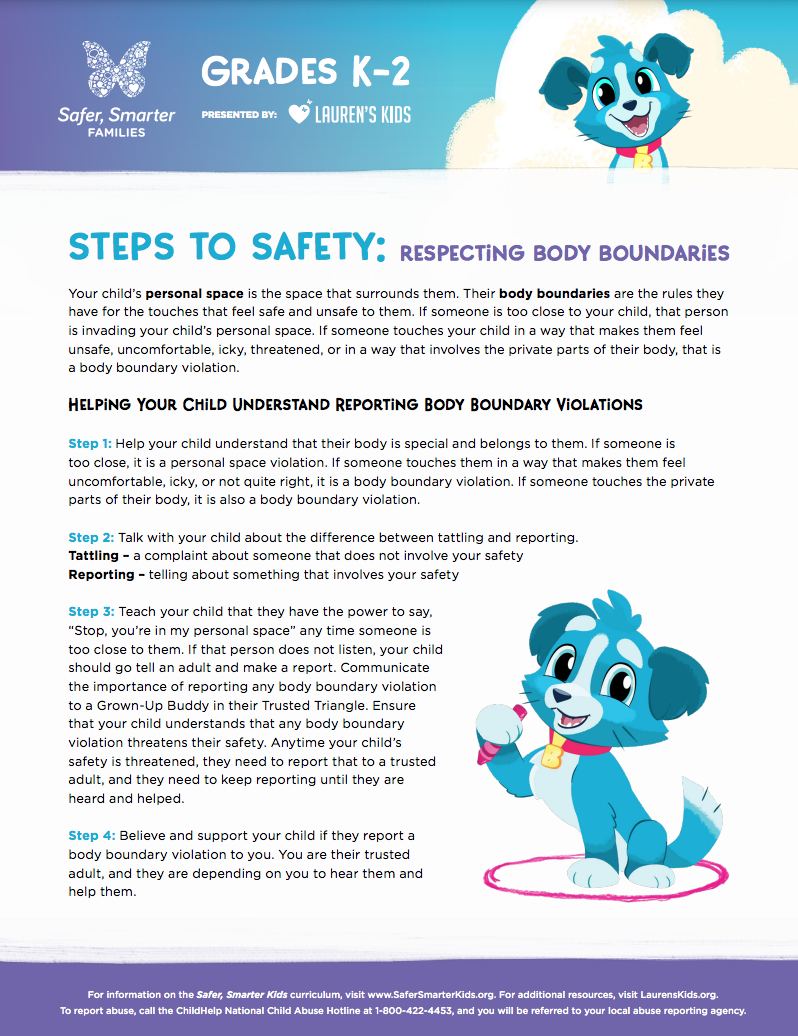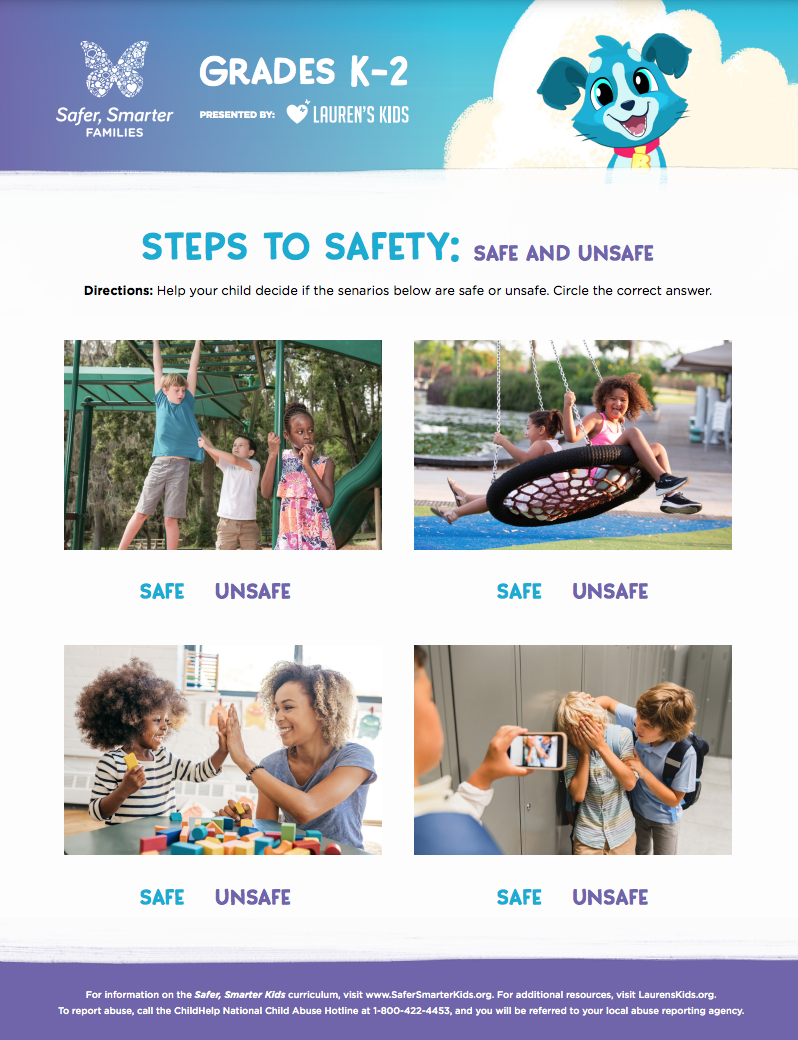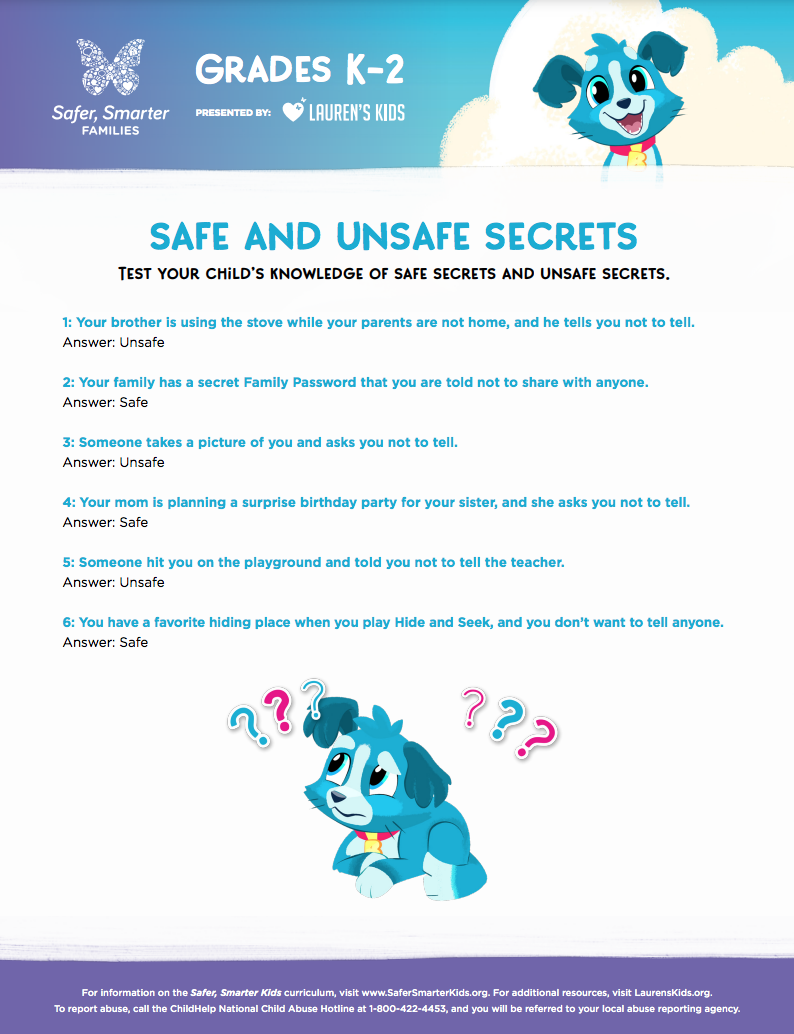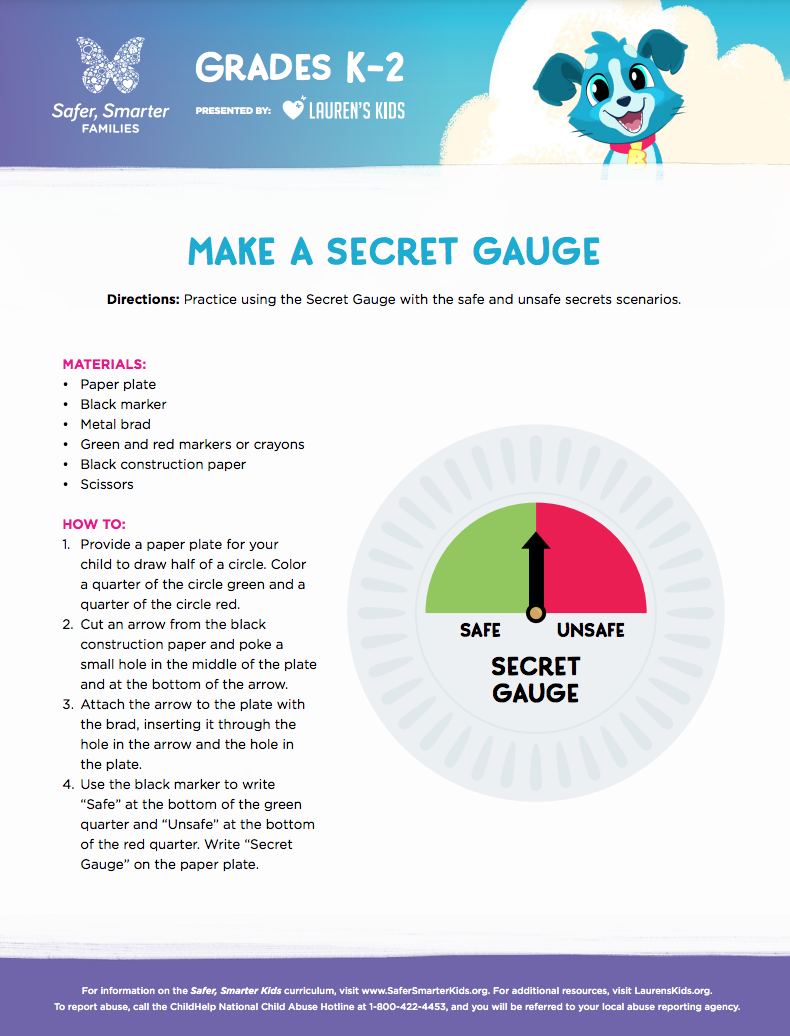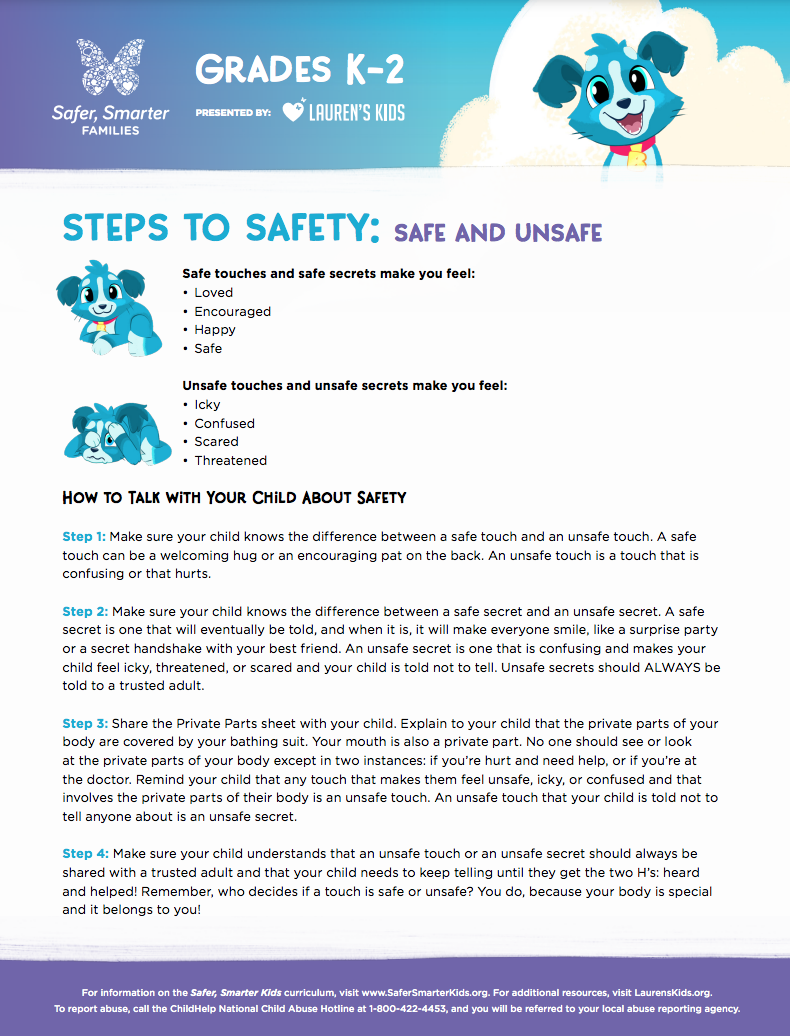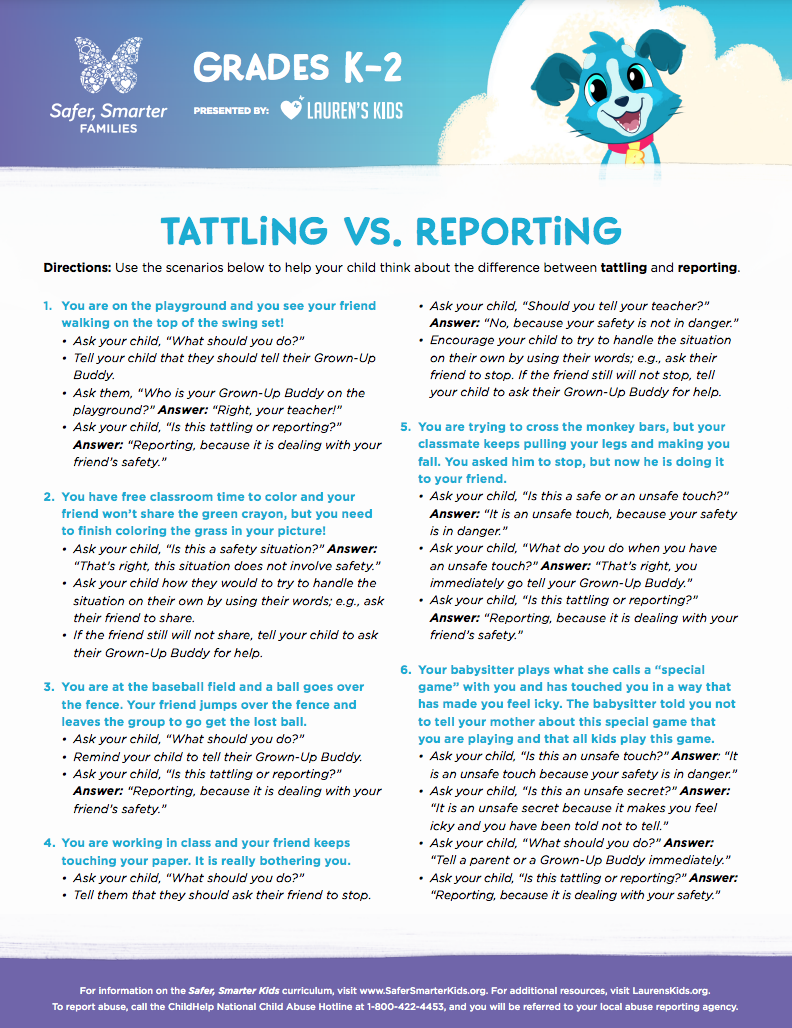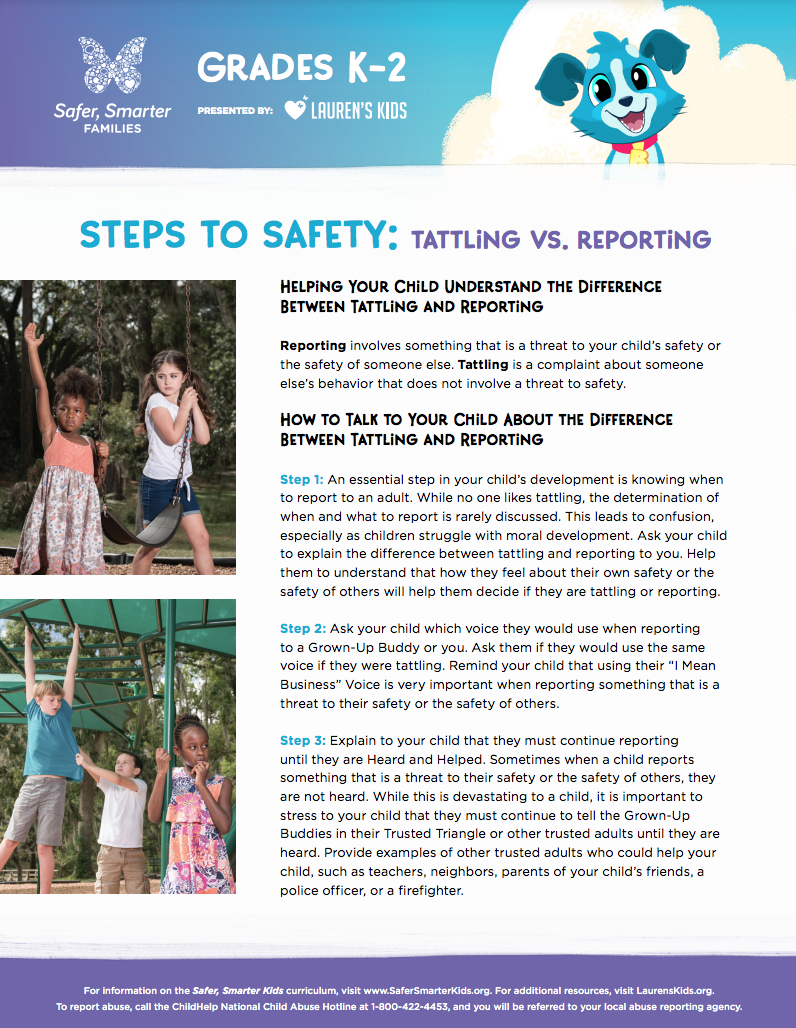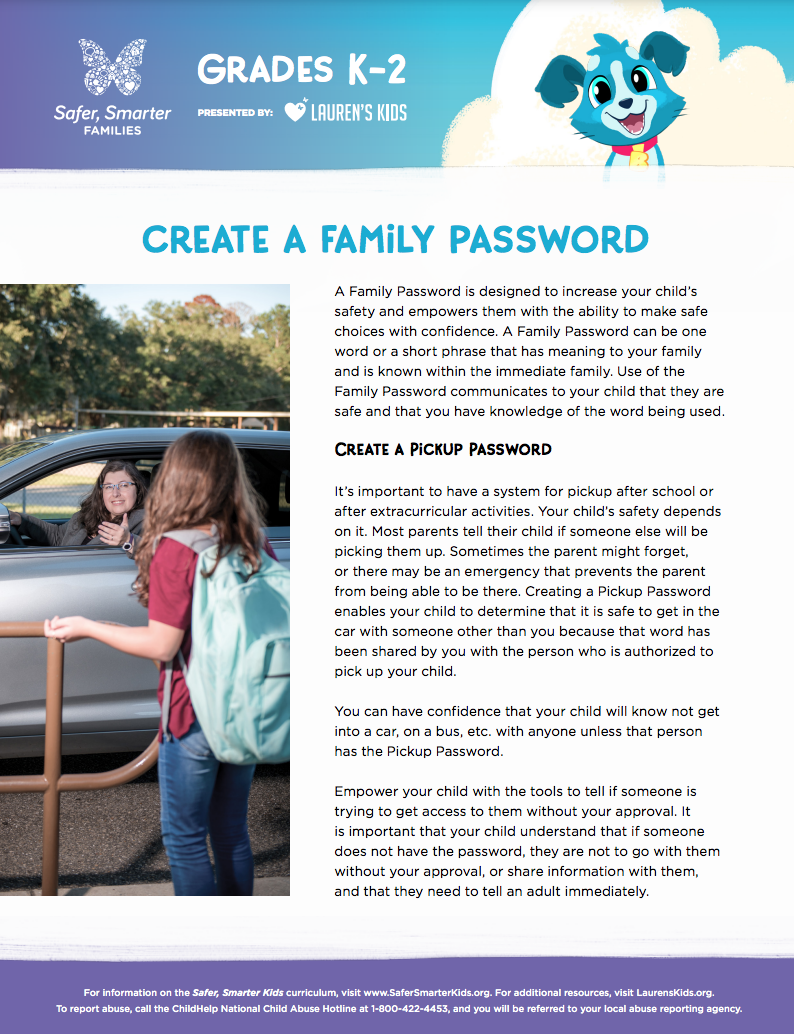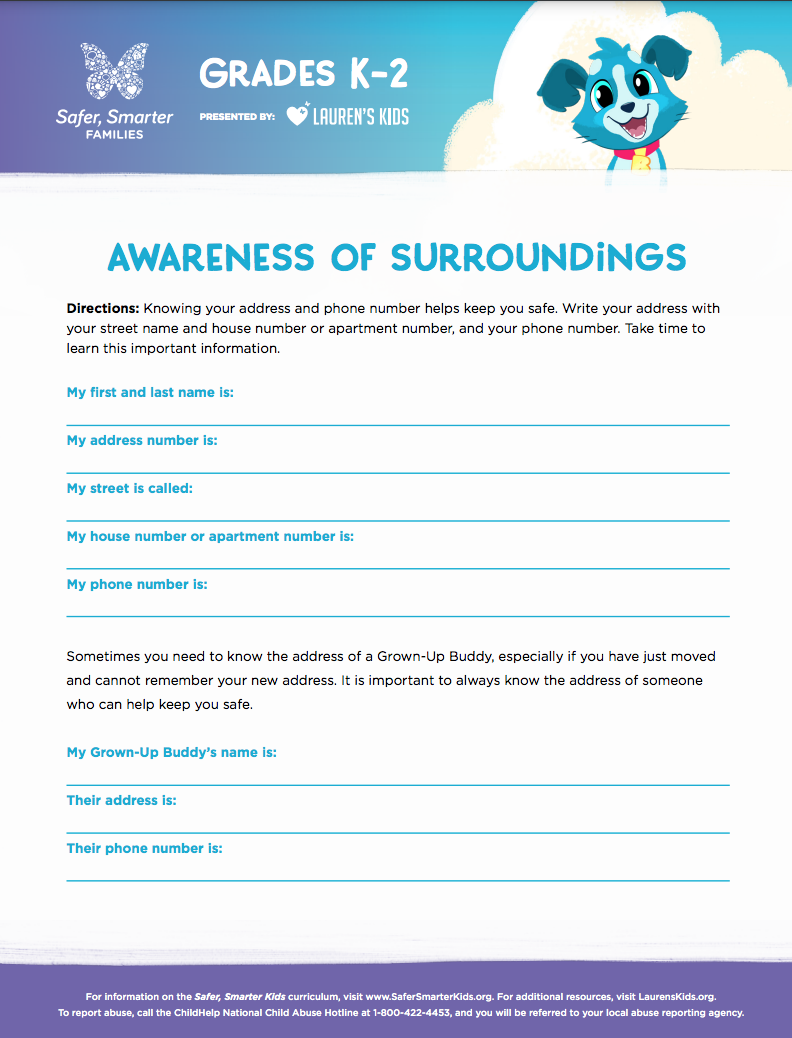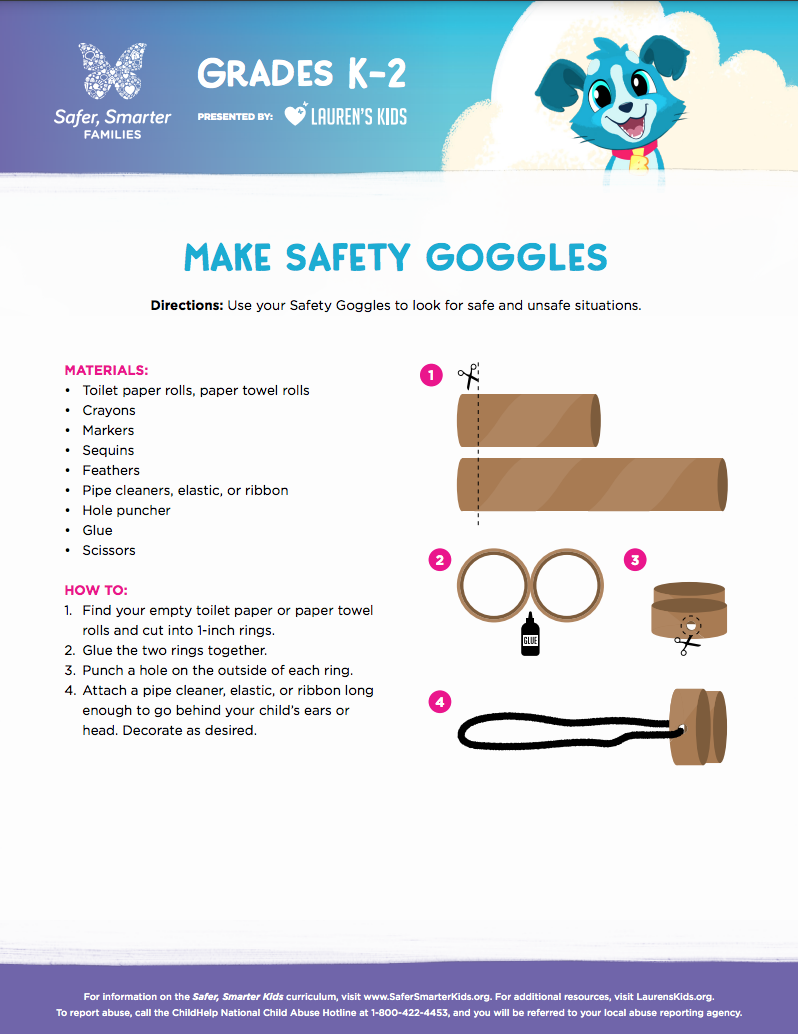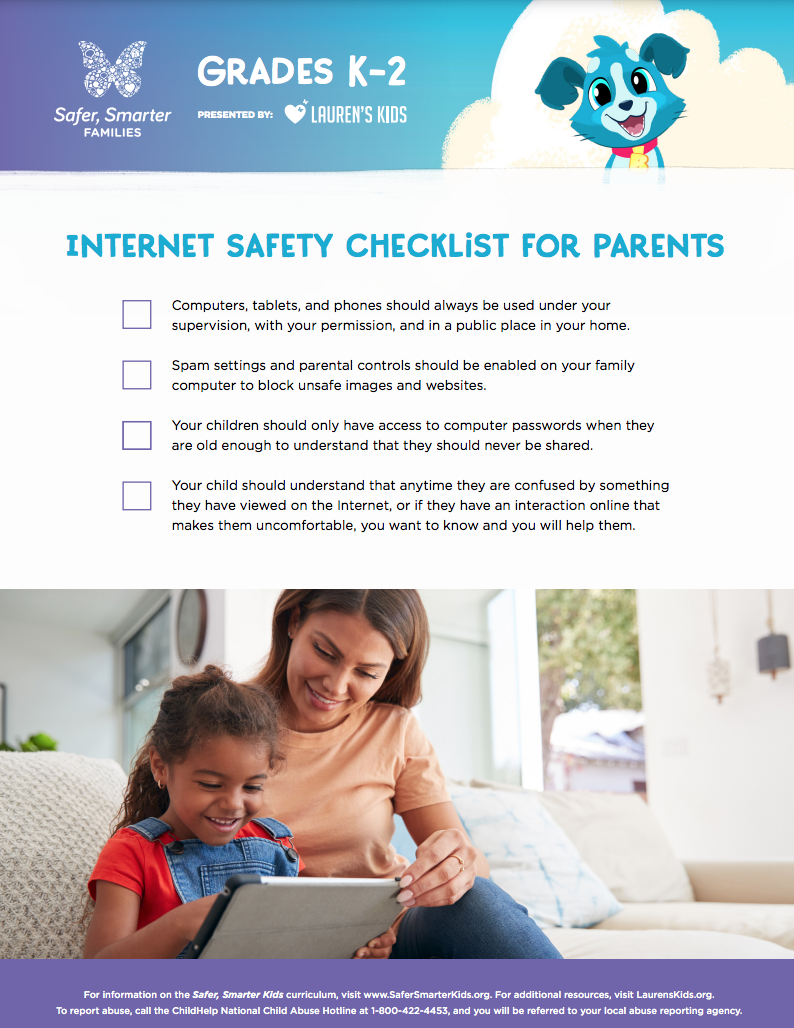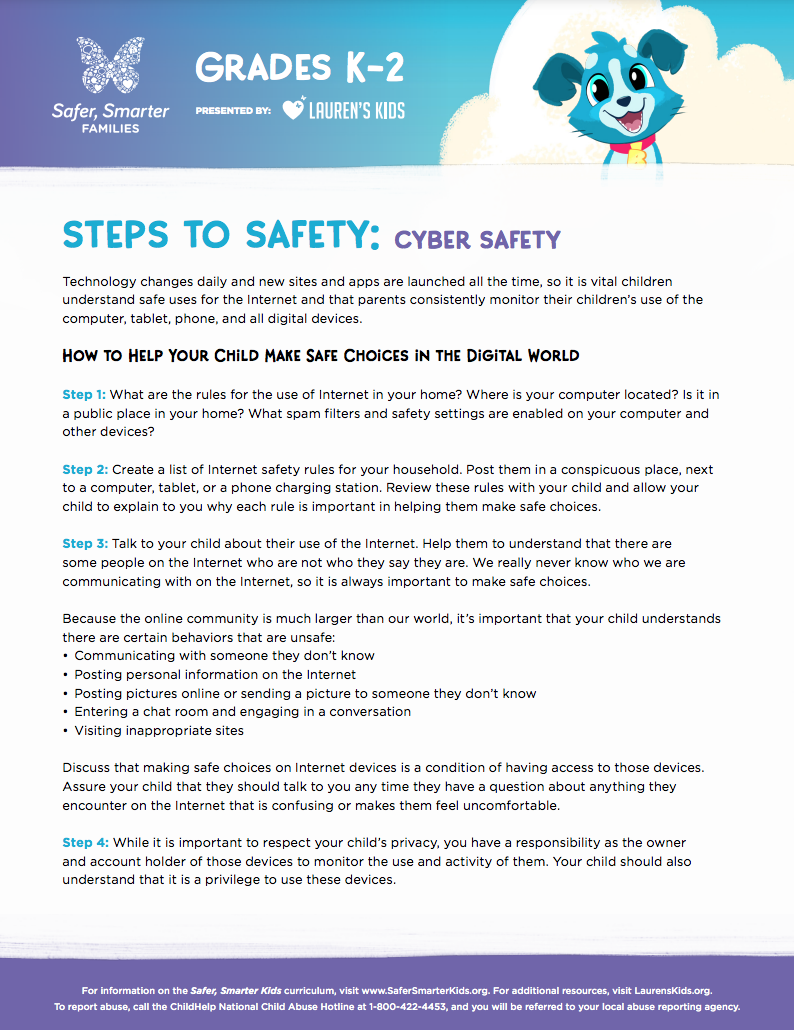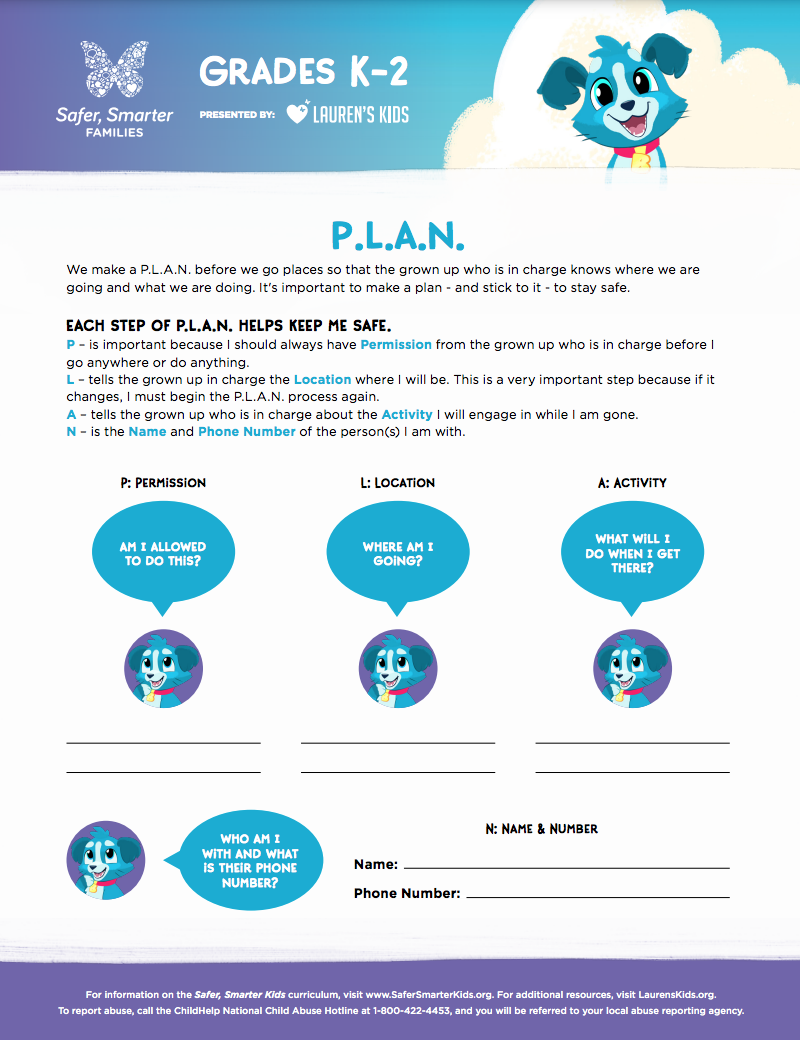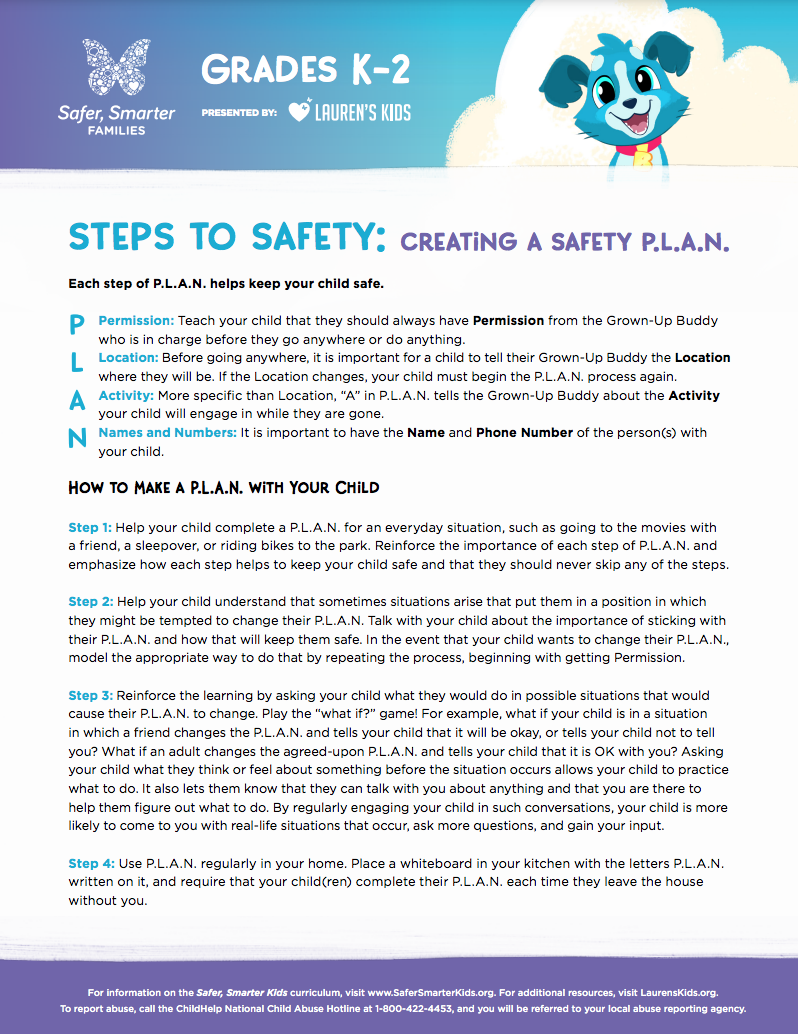Glossary
-
Body Boundaries
The rules you have for touches that feel safe or unsafe to you.
-
Grown-Up Buddies
Trusted adults who are old enough to drive who help a child to be safe; this is someone who will help you make safe decisions and protect you.
-
Guiding Voice
The voice inside you that tells you when you’re feeling excited, confused, nervous, or uncomfortable and might be in an unsafe situation or need help; you should always listen and tell someone in your Trusted Triangle if you realize that you feel confused, nervous, or uncomfortable.
-
I Mean Business Voice
We use our I Mean Business Voice any time we need our voice to be heard in any situation where we don’t feel safe.
-
Personal Space
The space around a person’s body that belongs to them; nobody should be going into our personal space without permission because your body belongs to you.
-
P.L.A.N.
Permission, Location, Activity, Names and Numbers of people you are with; anytime you go somewhere, you make a P.L.A.N. First, get Permission from the grown-up in charge of you. Next, tell them the Location where you will be. Then, let the grown-up in charge of you know what Activity you will be doing. Finally, give the Name(s) and phone Number(s) of the people you are with.
-
Private Parts
The parts of your body that are covered by your bathing suit; your mouth is also a private part that no one should touch or put things into without your consent or approval
-
Safe Secret
A safe secret is one that is eventually told and that makes everyone happy.
-
Unsafe Secret
An unsafe secret is one that makes you feel confused, “icky,” or scared and that you are told not to tell.
-
Safe Touch
You decide if a touch is safe or unsafe based on how it makes you feel. A safe touch is one that makes you feel loved, happy, comforted, and safe. This can be a welcome hug, an encouraging pat on the back, or cuddling with someone you love.
-
Unsafe Touch
An unsafe touch is a touch that makes us feel “icky,” uncomfortable, or confused.
-
Safety Goggles
Safety Goggles help us to be aware of our surroundings by teaching us to focus on situations and make safe decisions.
-
Safety Stop Sign
The Safety Stop Sign represents our ability to say “no” in a situation that makes us feel unsafe.
-
Secret Gauge
Your Secret Gauge is always with you and helps you decide if a secret is safe or unsafe. A safe secret is one that is eventually told and that makes everyone happy. An unsafe secret is one that makes you feel confused, “icky,” or threatened and that you are told not to share.
-
Stranger
People that you don’t know well; anyone that you don’t know well is a stranger.
-
Tattling
Tattling is a complaint about someone else’s behavior that doesn’t involve safety.
-
Reporting
Reporting is telling about something that involves a threat to safety.
-
TFA – Think, Feel, Act
TFA stands for Think, Feel, Act. A tool to help you decide what you Think about a situation, how it makes you Feel, and what Action you should take to keep yourself safe.
-
Trusted Triangle
A Trusted Triangle is made up of trusted adults who are old enough to drive and to whom you can tell anything. One person in your Trusted Triangle should be a person not in your family.





